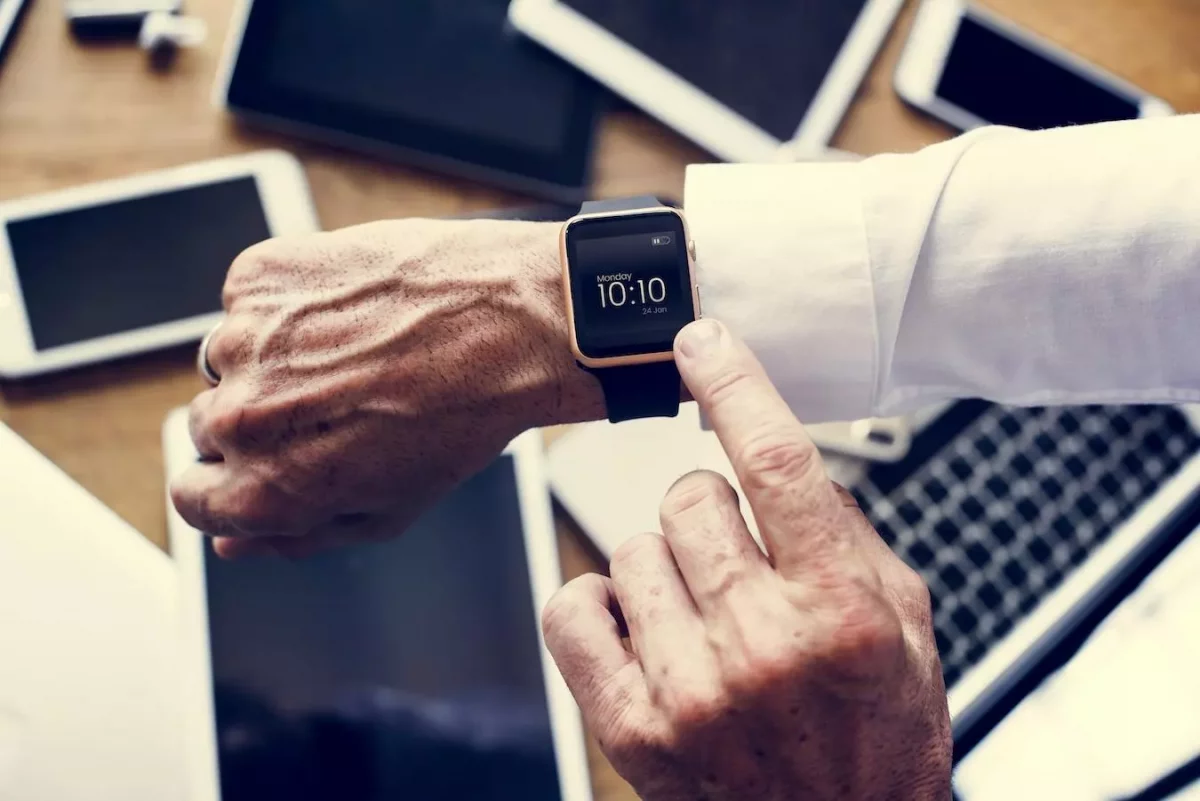How Long Does Apple Watch Battery Last? [With Test Results!]
Apple is a better marketing company than it is a technology company, and that much is evident from its superior hold over the market despite refusing to be the first mover in any space. It can be inferred from Apple’s recent moves that the tech giant prefers perfecting the user experience and its marketing message instead of being the first to the market with any technology.
The Apple Watch is not the first smartwatch, but it is by far the best marketed one, and among its bold marketing claims is a long-lasting battery. The table below covers how long different Apple Watches’ batteries last, according to the manufacturer.
Apple Watch battery lasts up to 18 hours according to the company but its average functioning capacity is 4 to 6 hours lower than the absolute maximum purported by Apple. To achieve maximum running time, one has to disable a number of Apple Watch features.
In this article we will go over all you need to know about saving your Apple Watch battery but first, let’s break down Apple battery time per watch series.
How Long Does Apple Watch Battery Last?
Here’s a quick table that summarises the battery life of the apple watch according to Apple itself –
| Apple Watch | Passive Battery Life | Battery Capacity |
| Apple Watch Series 1 | Up to 12 hours | 250 mAh |
| Apple Watch Series 2 | Up to 16 hours | 273 mAh |
| Apple Watch Series 3 | Up to 18 hours | 341 mAh |
| Apple Watch Series 4 | Up to 18 hours | 292 mAh |
| Apple Watch Series 5 | Up to 18 hours | 296 mAh |
| Apple Watch Series 6 | Up to 18 hours | 304 mAh |
| Apple Watch Series 7 | Up to 18 hours | 309 mAh |
| Apple Watch SE | Up to 18 hours | unknown |
The uniformity of this claim is what makes its practicality suspect. How can a smartwatch that has a heart rate monitor and a smartwatch that doesn’t even have cellular capabilities have the same battery life? The answer is simple: Apple only mentions the maximum battery life.
For older models like Series 1, this is closer to the actual battery life, but for newer models, you need to turn off most features in order to achieve this lifespan.
How Long Does the Apple Watch Battery Really Last?
Apple Watch battery lasts an average of 14 to 16 hours depending on how much active screen time you have, the number of unmanaged tasks you maintain, and the applications you use. With excessive use, the Apple Watch battery can run out in under 10 hours.
The most practical way to improve your smartwatch’s battery life is to look at the factors that increase power usage and neutralize ones you don’t need. Knowing the primary reason
Factors that Affect the Apple Watch Battery Life

Apple Watch battery life is affected by each and every factor that demands power. This is also why Apple’s claim of 18-hour battery life is suspicious because the feature stack of different watches is drastically different, yet all claim to have the same battery life. Depending on the series and the make of your watch, the following factors can shorten or lengthen your Apple Watch’s battery life.
1. Unmanaged Tasks
When you assign a task to the Apple Watch, it is considered unmanaged until it reaches its conclusion. Reminders, alarms, and even unread notifications are tasks that take up processing power. And given that the processor of the Watch is powered entirely by the battery, a larger roster of unmanaged tasks results in poor battery life.
2. Screen Time
One of the biggest drains on the smartwatch’s battery is the amount of active screentime. It is also the greatest contributor to the discrepancy between what Apple claims is its watches’ battery life and what their battery life actually is.
Apple assumes an average screen time while most users use the screen far more than is advisable. Simply using a power-saving setting to turn off the screen when the wrist is by your side can help increase your battery life.
3. Pairing
Apple Watch that constantly pairs and unpairs with an iPhone lose battery power in the process. If your phone is in an inaccessible place, it can keep getting disconnected. Constant connection is a contributor to the power drain. The most common cause of pairing disruption is putting your phone inside a bag. When placing your iPhone in a bag or clutch, make sure to turn off your Watch’s Bluetooth.
4. Cellular Data
While Bluetooth consumes energy, it is often necessary. But if your Apple Watch has a cellular package and your network data access is on, you’re probably using more battery power than you should.
Connecting your Apple Watch to a WiFi network to which its paired WiFi has previously connected is enough to make WiFi calls and even receive messages. The cellular network should be turned on only when it is necessary.
5. Number of Charge Cycles
While most Apple Watch battery-draining factors are limited to the watch activity, this one is not related to how you use the Watch. After a few hundred charging cycles, the Apple Watch’s battery capacity decreases.
Eventually, the watch battery can only store 80% of its initial capacity. Still, that should result in over 14.4 hours of usage time upon a full recharge.
How to Check and Monitor Apple Watch Battery Consumption?
You can check Apple Watch battery consumption by swiping up on the home screen to open the control center and look at the percentage value against the battery icon. To avoid getting surprised by sudden battery drain, you can add the battery widget on your iPhone.
The battery widget on your iPhone shows the percentage of usable battery power left in connected devices like the Apple Watch. The video below covers how you can add the battery widget to your iPhone. It is no different than adding a standard widget to your screen, but if you’ve not added widgets before, this resource makes it quite simple.
How to Improve Apple Watch Battery Life?
You can improve the Apple Watch battery life by reducing the background processes it has to execute and avoiding extended screentime. You should also use cellular network access only when it is essential.
Here are the steps you can take to minimize the burden on your Apple Watch battery.
- Reduce screen brightness – significant battery lower is dedicated to illuminating the crisp Apple Watch display. By going to settings, you can toggle the ‘Always On’ setting off so that your smartwatch display isn’t always using the battery.
- Reduce task burden – Another thing you can do to make your Apple Watch more power efficient is to lower the number of tasks it has to execute. Reducing reminders, lowering notification load, and activating fewer tracking features can all help reduce the burden on the Watch’s processor and the drain on its battery.
- Turn off mobile data – as mentioned earlier, cellular network access can exhaust the watch battery. When you can use WiFi, you should turn off your mobile. Data on your smartwatch.
- Turn off the heart rate tracker – the heart rate tracking feature is great when you want to know-how about your cardiac health at a glance. However, it demands a lot of battery power. If you can turn off the 24/7 tracking of your heart rate, you can take each charging cycle much farther.
- Disable wrist raise actions – when the ‘wake on wrist raise’ feature is turned on, the Apple Watch constantly monitors wrist position to light up the screen when you bring it in front of you. While this is better than having your screen turned on at all times, it also drains the battery in other ways
Do Workouts Affect the Apple Watch Battery Drain?

Workouts affect the Apple Watch battery drain because they activate continuous heart rate monitoring and calorie counting tasks which remain unmanaged until the activity is completed. All unmanaged tasks adversely affect the smartwatch’s battery.
You can turn off the workout mode to improve your battery life, but you might want to count the calories you’ve burned. If you use the Apple Watch to track your calories, you need to know that the device is usually inaccurate about the calories burned.
My post on this covers why the Watch doesn’t get the precise calorie burn data and what you can do to improve its accuracy. If you’re draining your Apple Watch battery for calorie tracking, you might as well make sure that the calorie counter is doing its job.
How Often Should You Charge Your Apple Watch?
You should charge your Apple Watch once every 24 hours at a minimum. But given that the Apple Watch doesn’t overcharge even if you leave it on charge for a whole day and that recharging at any stage doesn’t affect battery capacity or efficiency, you must charge it every chance you get.
Generally, charging a gadget when it isn’t nearly empty can affect the battery efficiency. This used to be true for major smartphones ten years ago. Currently, Apple devices, including the Apple Watch, can be charged at 99% or at 1% without any risk of battery damage.
If you want to know exactly how long the Watch takes to charge, I have a separate post dedicated to the charging time of different Apple Watch Series. That information is relevant if you use Apple Watch’s sleep tracker and go to bed wearing it.
In that case, you need to know exactly how long you need to charge the Apple Watch. If you charge the Watch overnight, the charging time is irrelevant because you’ll wake up to a fully charged watch regardless of its model or make.


![Is the Apple Watch Calorie Counter Accurate? [We Find Out!]](https://styleuphq.com/wp-content/uploads/2022/07/woman-using-smart-watch-2021-08-29-07-15-05-utc-1200x800.webp)

![What is a Summer Perfume? [And How to Choose One!]](https://styleuphq.com/wp-content/uploads/2021/10/beauty-woman-perfume-aroma-blonde-perfumes-jo-malone-perfume-bottles-morning-ritual-eau-de-toilette_t20_E0XNe8-optimized.webp)
![How to Make Shoes Smell Better? [Comprehensive Guide!]](https://styleuphq.com/wp-content/uploads/2023/09/young-woman-holding-a-pair-of-smelly-shoes-2021-10-06-09-50-46-utc.jpeg)
![Is Fitbit Worth It? [A User’s Complete Review!]](https://styleuphq.com/wp-content/uploads/2022/03/Fitbit-Charge-2.webp)